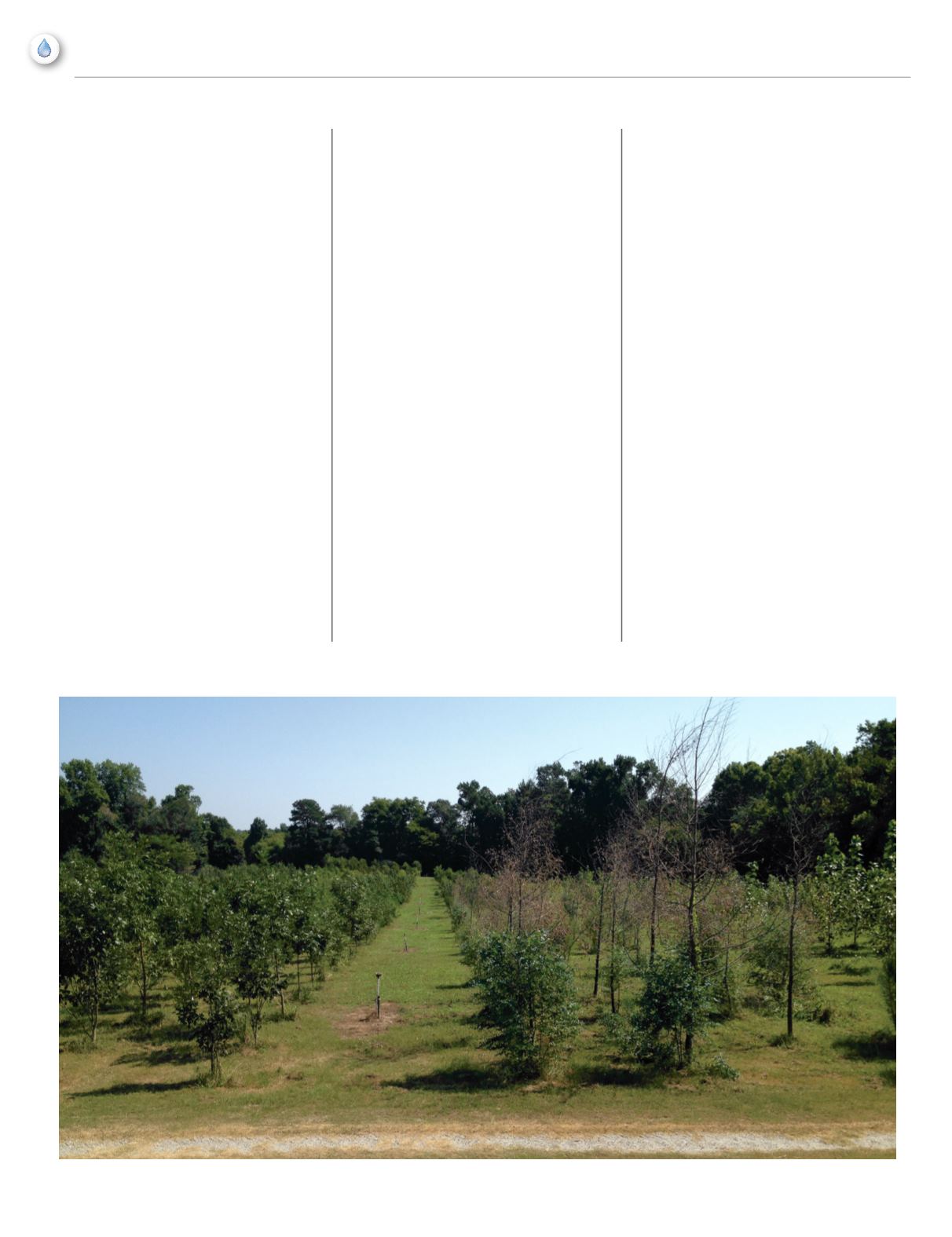
12
|
Fall 2014
feature
Dennis Hazel became involved. We talked
with Dr. Nichols, and she informed us that the
sycamores fell to a blight that results from a
certain length of cold/frost each winter. The
trees start dropping leaves around late August
and turn brown. You can see sycamores across
eastern North Carolina with this blight, and it
was probably not related to their location in
the spray irrigation field.
The study of the irrigation field began in 2011
by planting trees of different species in plots,
so they could be studied to determine which
species had the best nutrient uptake, and would
be best suited to use in this environment. New
tree varieties have been planted each year since.
Gibson has the distinction of having the furthest
north plantation of eucalyptus trees in the United
States. The study is expected to last for another
three years. Greg told us that the larger trees
must be pruned annually, and the land surface
bush hogged frequently throughout the year.
The study involves looking at the water
cycle to determine how it is affected by
spray irrigation, and there is a rain gage and
ambient air monitor set up a little distance
from the lagoons. There is also a monitor
in Blues Creek, near the irrigation field,
which can provide information on nutrient
management, runoff, and surface water
quality. Groundwater chemistry is also
studied through the five Town-owned monitor
wells on site, in addition to the eight wells that
were installed by NC State.
Dr. Nichols told us that NC State has a
similar study at Jacksonville, NC and they
are currently working (but have not planted
anything) with the Town of Edenton. She also
told us that the site is performing as expected
for nutrient management, and so far has met
permit requirements. NC State is looking at
developing a water budget for the site using
chloride and stable water and oxygen isotopes.
How can interested wastewater systems
get involved in this type of study? Contact
either Dr. Nichols or Dr. Hazel at NC State’s
Department of Forestry and Environmental
Resources, College of Natural Resources.
Before we left the Town of Gibson, Greg showed
us around the Town’s historic train depot,
which is in the process of being converted into a
museum. The museum contained artifacts from
as far back as the Civil War, and many historic
items, all donated by citizens of the town.
Display cases held documents, swords, and all
manner of interesting and unusual items. Old
blueprints and maps of the town were framed
and hung on the walls, which showed a large
number of plots owned by folks of the Gibson
clan from which the Town got its name.
Gibson is a great little town in the beautiful
Sand Hills of North Carolina, which is pleased
to serve its citizens with water and wastewater
service. NC Rural Water Association is proud
to have system members like the Town of
Gibson, who use initiative to solve problems
in an innovative way. If your system has a
unique solution to a real-world problem, and
would like to be featured in the
Pipeline
, give
us a call.


